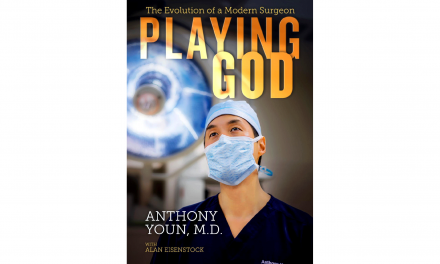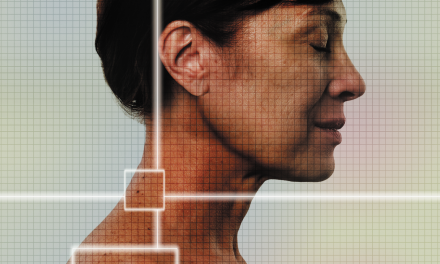Charlene DeHaven, MD explores the use of antioxidants in sunscreens to provide additional protection against non-UVA/B environmental aggressors
The need for broad-spectrum photoprotection against UVA and UVB damage for risk mitigation of photoaging and skin cancer development is well accepted. Broad-spectrum photoprotection protects against DNA damage1 and reduces risks of photo exposure. In addition to sunscreen actives that accomplish this goal, substantial additional work has been published on the advisability of incorporating antioxidants and other ingredients into the skin care regimen. Sunscreen antioxidants providing an extra reserve against non-UVA/B radiation — such as infrared radiation, pollution, and/or blue light— would be beneficial. One requirement, however, would be that these must not be exhausted during UVA/B protection and must maintain enough antioxidant reserve to neutralize these other free radical sources. As explained herein, it is possible to design a sunscreen including extra antioxidants possessing this capacity.
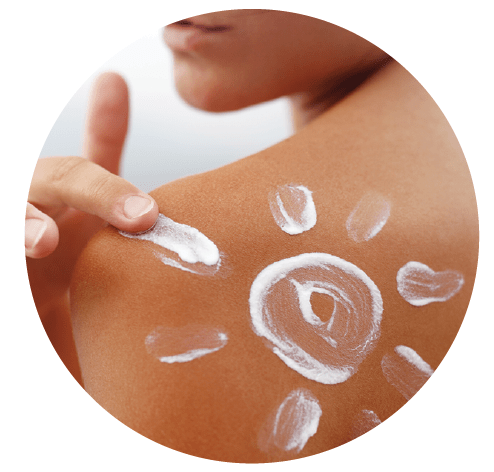
Pollution is one of these important sources. According to the World Health Organization, the percentage of people living in urban areas with substandard air quality has increased from WHO’s previous estimate of 87 percent several years ago to 92 percent in 20163. The incidence of all skin symptoms, skin diseases, and morbidity from disease in general increases during times of worsening pollution4,5.
Blue light — also termed HEV or high energy visible light — exposure is much higher now than in pre-industrial times. Due to dramatic increases in personal device use, including laptops and cell phones, individuals worldwide sustain average exposure to four hours per day of HEV light exposure from personal devices. This is in addition to the HEV blue light exposure humans have always received from the sun6. Although blue light may be used therapeutically7, this radiation is a deeply penetrating form of light that is another source of free radical damage7 in the non-therapeutic milieu.
Solar infrared radiation is another environmental aggressor8.
The term ‘total sun protection’ refers to providing topical protection against the totality of environmental free radical sources9. In addition to these external sources, internal cell metabolism is another important source of free radical damage within living cells. This is an ever-present source of oxidative damage since these processes are required for cellular life10. The ‘exposome’ consists of the entirety of external stressors and free radical sources to which the organism is exposed11.
Protection from solar free radical damage is the primary purpose of sunscreen but additional sunscreen actives can protect against other secondary sources of important cellular damage, including DNA damage. Examples of such actives include antioxidants and DNA repair enzymes12.
DNA damage is a key component of photoaging and risks for skin cancer development13. Furthermore, DNA damage is relatively easy to quantify with CPD (cyclobutane pyrimidine dimer) measurements. CPD formation occurs with both UVA and UVB exposure and is the most commonly found type of DNA damage found in this situation14. DNA damage results from the effects of oxidative stress upon the skin cell.
The wisdom of incorporating additional antioxidants into sunscreens has been discussed in the literature15. Adding antioxidants to a sunscreen is convenient for the consumer as this requires the use of fewer total products and could improve compliance. This article illustrates that antioxidants and other beneficial actives incorporated adequately into a cosmeceutical product can provide DNA damage protection in excess of that related to UVA and UVB exposure alone.
Methods
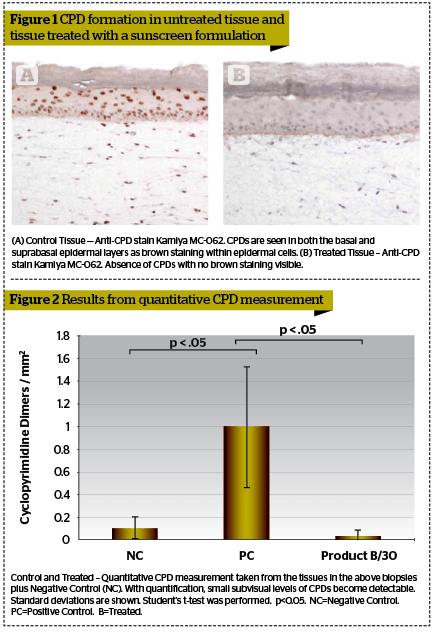
Positive control tissue — Anti-CPD stain Kamiya MC-062. CPDs are seen in both the basal and suprabasal epidermal layers as brown staining within epidermal cells.
Treated tissue — Anti-CPD stain Kamiya MC-062. Absence of CPDs with no brown staining visible.
Control and treated tissue — Quantitative CPD measurement taken from the tissues in the above biopsies plus negative control (NC). With quantification, small subvisual levels of CPDs become detectable. Standard deviations are shown. Student’s t-test was performed; p<0.05.
Discussion
The biopsies with CPD staining exhibit an absence of visible CPDs with sunscreen application and heavy CPD staining without sunscreen. Microscopy appears to indicate effective mitigation of all sources of free radical damage and resultant CPD creation. However, finer assessments are provided with a quantified measurement of CPDs. Here, the amount of free radical protection afforded by the sunscreen is shown to be more comprehensive and extends beyond UVA/B protection alone.
The bar graph illustrates the negative control/NC (skin in the dark), positive control/PC (sunlight-exposed skin without product, and product (sunlight-exposed skin with product applied 20 minutes before exposure). The bar associated with product indicates more free radical absorption than skin in the dark. The difference between the NC and product measurements indicates the additional antioxidant protection conveyed for non-UVA/B damage.
Although these measurements are weighted in favour of the oxidative stress secondary to intracellular metabolism, it is not unreasonable to expect that all sources of free radical damage would be similarly mitigated.
Conclusion
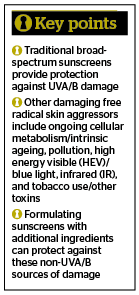
Declaration of interest Charlene DeHaven is Clinical Director of INNOVATIVE SKINCARE®, manufacturer of iS CLINICAL® products
Figures 1-2 © Dr DeHaven
* EXTREME PROTECT® SPF30, manufactured by iS CLINICAL®




